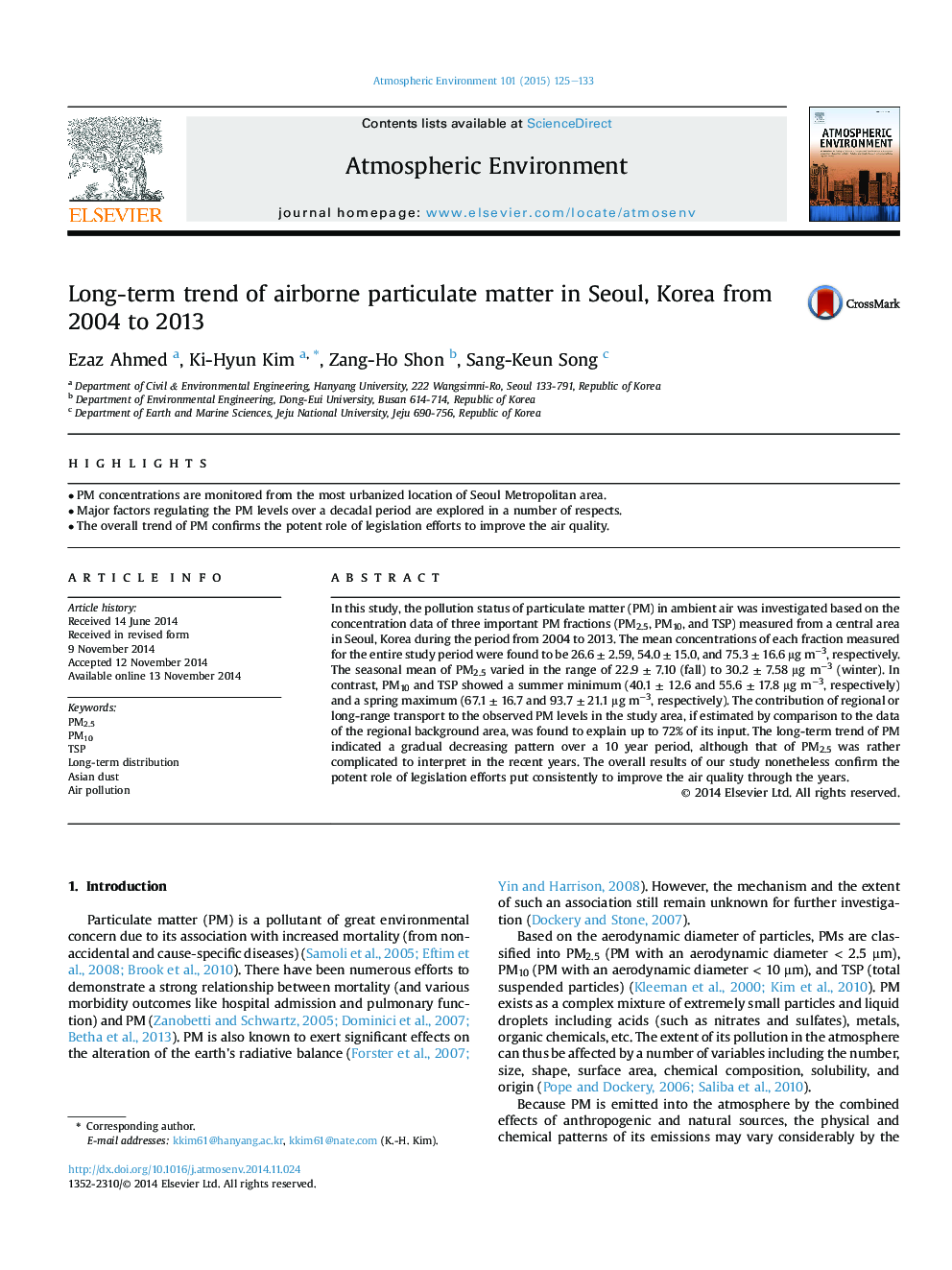| Article ID | Journal | Published Year | Pages | File Type |
|---|---|---|---|---|
| 6338605 | Atmospheric Environment | 2015 | 9 Pages |
Abstract
In this study, the pollution status of particulate matter (PM) in ambient air was investigated based on the concentration data of three important PM fractions (PM2.5, PM10, and TSP) measured from a central area in Seoul, Korea during the period from 2004 to 2013. The mean concentrations of each fraction measured for the entire study period were found to be 26.6 ± 2.59, 54.0 ± 15.0, and 75.3 ± 16.6 μg mâ3, respectively. The seasonal mean of PM2.5 varied in the range of 22.9 ± 7.10 (fall) to 30.2 ± 7.58 μg mâ3 (winter). In contrast, PM10 and TSP showed a summer minimum (40.1 ± 12.6 and 55.6 ± 17.8 μg mâ3, respectively) and a spring maximum (67.1 ± 16.7 and 93.7 ± 21.1 μg mâ3, respectively). The contribution of regional or long-range transport to the observed PM levels in the study area, if estimated by comparison to the data of the regional background area, was found to explain up to 72% of its input. The long-term trend of PM indicated a gradual decreasing pattern over a 10 year period, although that of PM2.5 was rather complicated to interpret in the recent years. The overall results of our study nonetheless confirm the potent role of legislation efforts put consistently to improve the air quality through the years.
Related Topics
Physical Sciences and Engineering
Earth and Planetary Sciences
Atmospheric Science
Authors
Ezaz Ahmed, Ki-Hyun Kim, Zang-Ho Shon, Sang-Keun Song,
